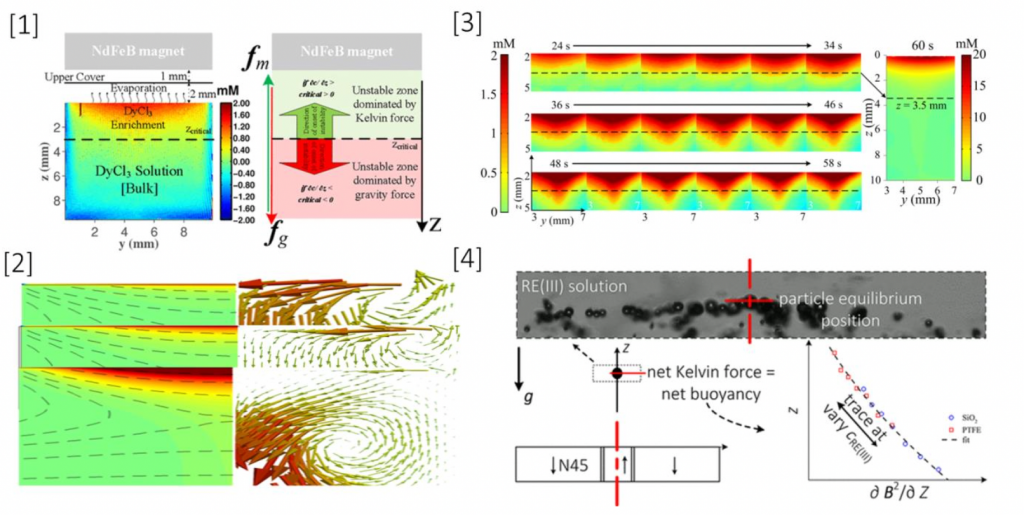
Zhe Lei
Group leader: electromagnetic separation Institute of Fluid Dynamics, Helmholtz-Zentrum Dresden-Rossendorf (HZDR), Germany Institute of Processing Engineering and Environmental Technology, Technische Universität Dresden, Dresden, Germany
Title: Magnetic Separation of Rare-Earth Ions
Abstract: In recent years, a fascinating phenomenon in the formation of enriched RE ions has been repeatedly observed close to the magnetic source. This potentially unlocks a green RE separation technology with effective hydrodynamic scales in the μm-particle range in microfluid cells or elevated valorization flux in high-gradient magnetic separators all the way down to the level of ions. Nevertheless, the phenomenon was physically surprising since a change in the ion concentration, c ∝ c0[1 − exp(−μ0HMV/kT )], cannot be expected for Boltzmann-distributed ions as their thermal energy kT is much higher than the magnetic term. Taking Dy(III) as model material, this puzzle has been solved [1] by actively controlling the evaporation at solution interface. Consequently, the loss of water molecules give rise to Dy(III) enrichment at the vicinity of magnetic source. Then, the hyper- diffusive growth of the concentration boundary layer observed was elucidated by quantifying the intriguing role of the Kelvin-force-driven microconvection, i.e. solutomagnetic convection. Thus, it leads to a transient toroidal vortex inside the enrichment zone. The resulting mass transport and momentum transfer interactively reshapes the initial planer enrichment flux into an oval distribution dictated by the magnetic source used [2]. Beyond a certain RE concentration enrichment, the RE content in the boundary layer can no longer be trapped near magnet. A hydrodynamic instability in form of a Rayleigh-Taylor instability sets in. To predict the limit of magnetic separation, a stability criterion was quantified by a 1D stability diagram based on Rayleigh number; and further extended to 3D via an analysis of the generalized density of a potential energy, which combines Kelvin force and gravity[3]. Furthermore, a material property database is provided for the solutal expansion coefficient and the magnetic susceptibility of 11 out of 17 trivalent RE. Besides, a novel protocol is developed to enhance and resolve the magnetic term of the Kelvin force [4].
[1] Lei, Z., Fritzsche, B. and Eckert, K., 2017. Evaporation-assisted magnetic separation of rare-earth ions in aqueous solutions. The Journal of Physical Chemistry C, 121(44), pp.24576-24587.
[2] Lei, Z., Fritzsche, B. and Eckert, K., 2021. Magnetic separation of rare-earth ions: Transport processes and pattern formation. Physical Review Fluids, 6(2), p.L021901.
[3] Lei, Z., Fritzsche, B. and Eckert, K., 2020. Stability criterion for the magnetic separation of rare- earth ions. Physical Review E, 101(1), p.013109.
[4] Lei, Z., Fritzsche, B., Salikhov, R., Schwarzenberger, K., Hellwig, O. and Eckert, K., 2022. Magnetic Separation of Rare-Earth Ions: Property Database and Kelvin Force Distribution. The Journal of Physical Chemistry C.
